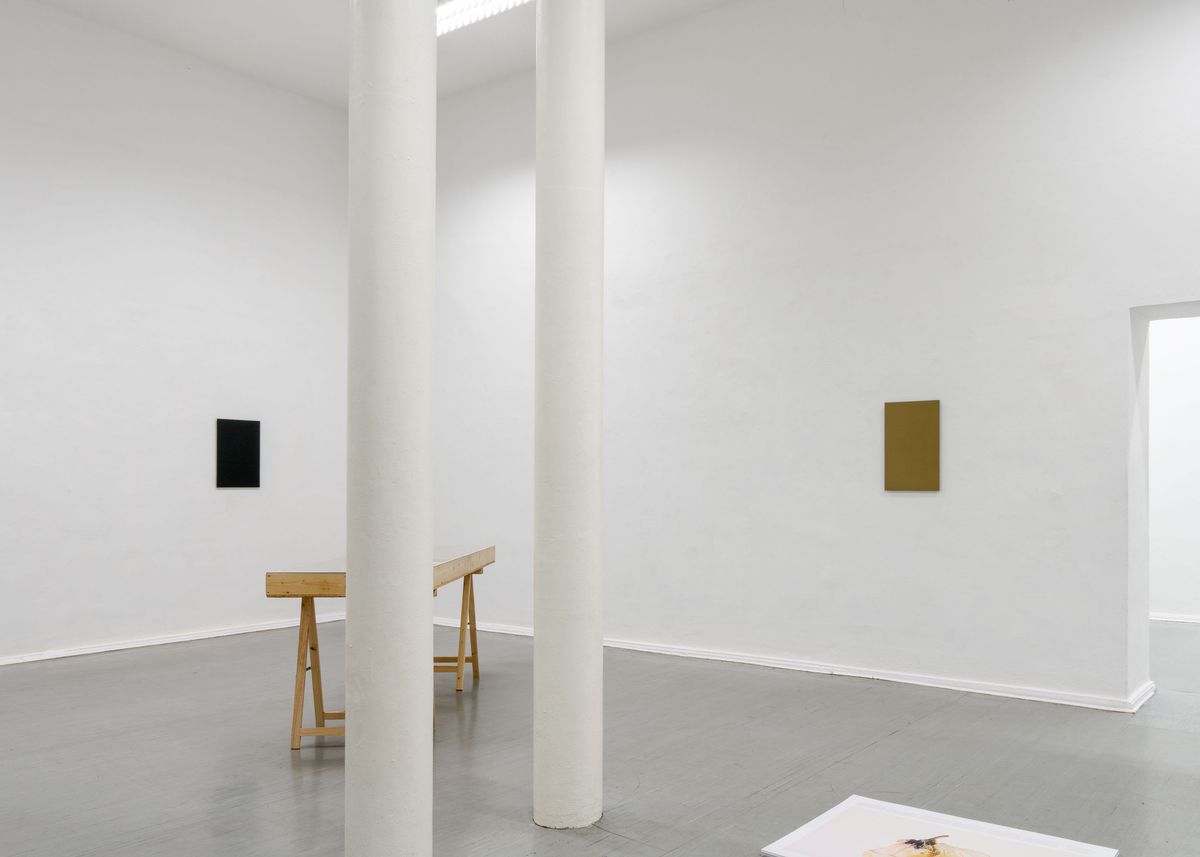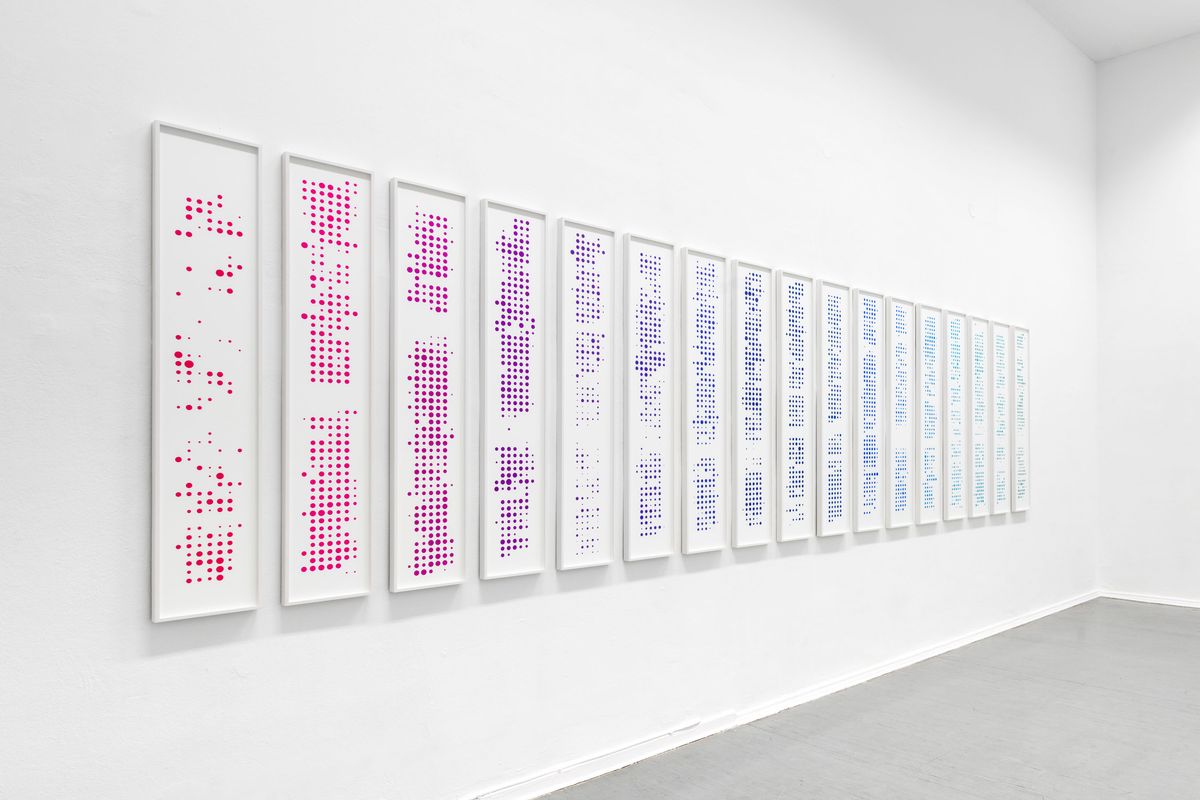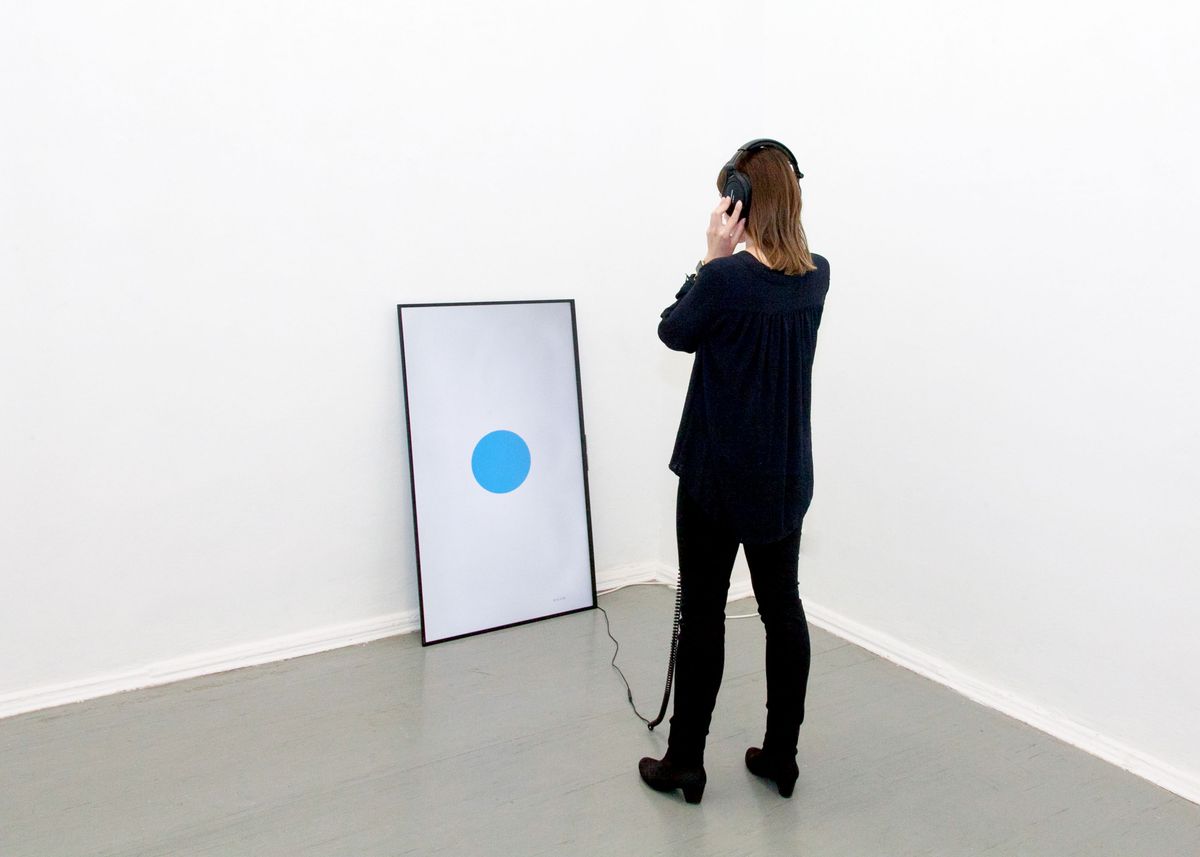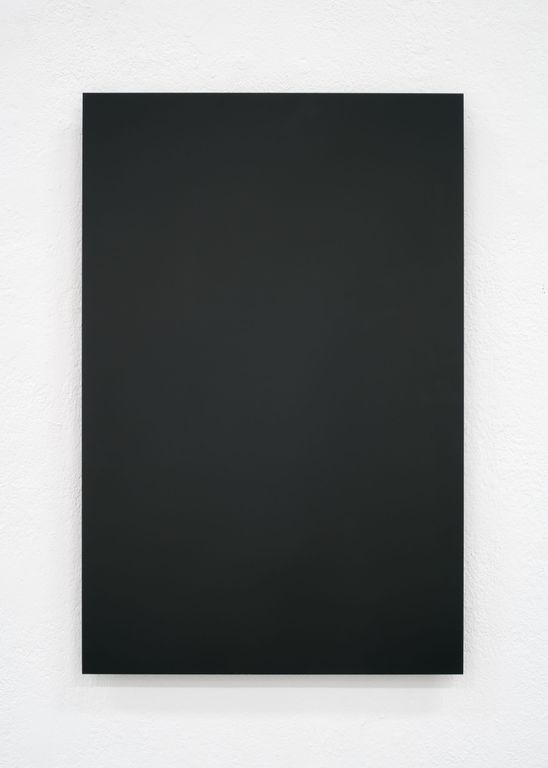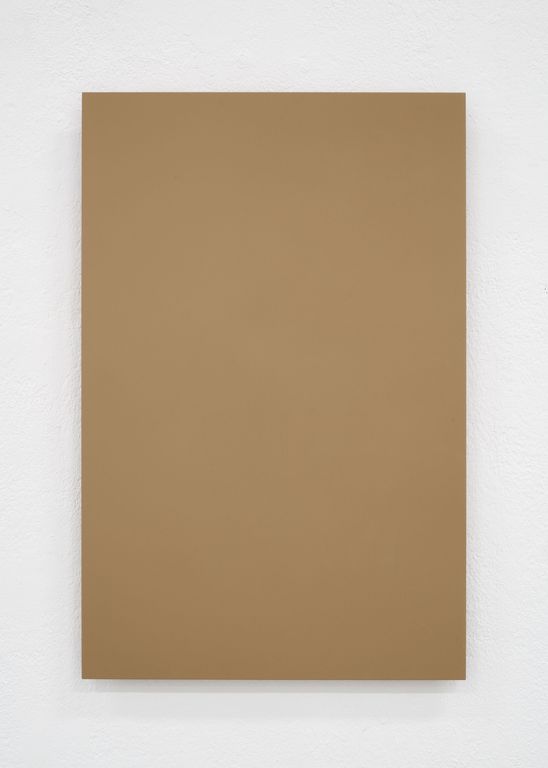Thirdness
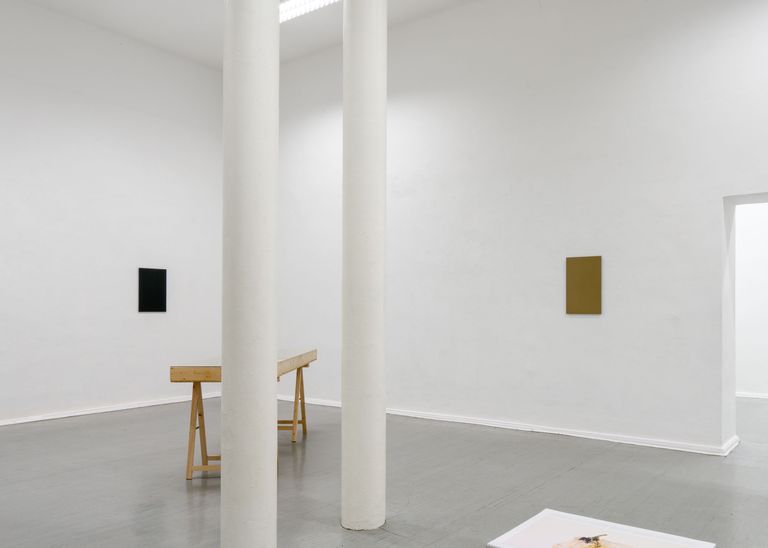
Photo: Henrik Strömberg
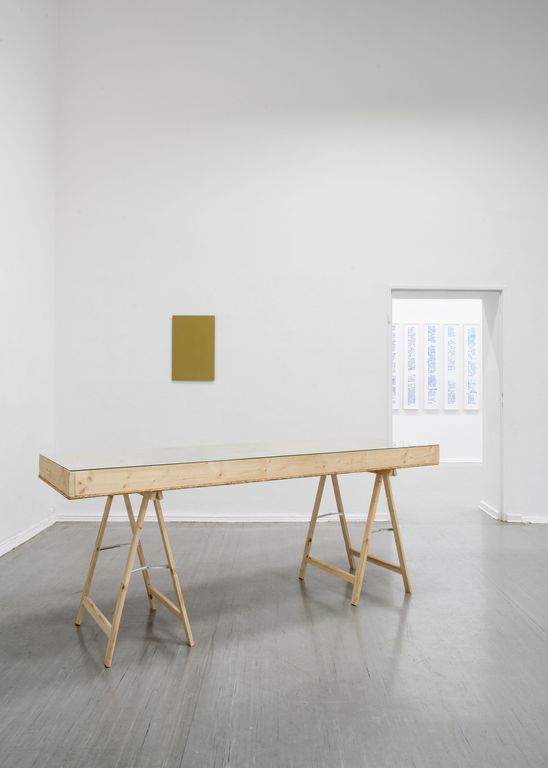
Photo: Henrik Strömberg

Photo: Henrik Strömberg
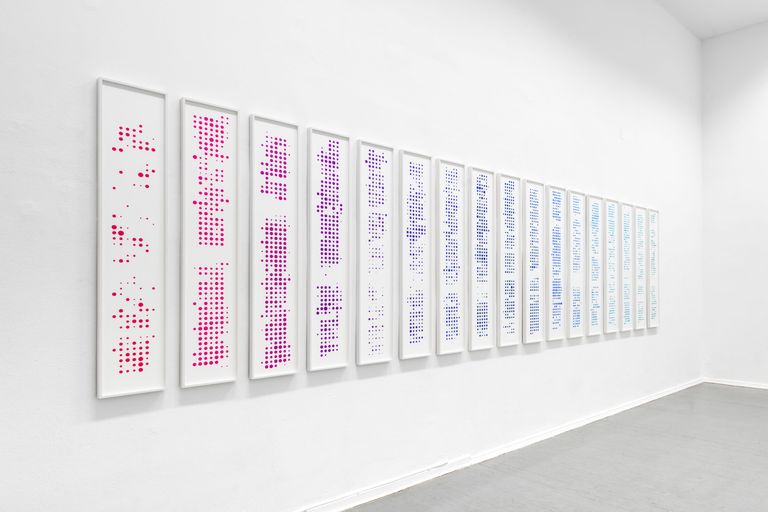
Photo: Henrik Strömberg
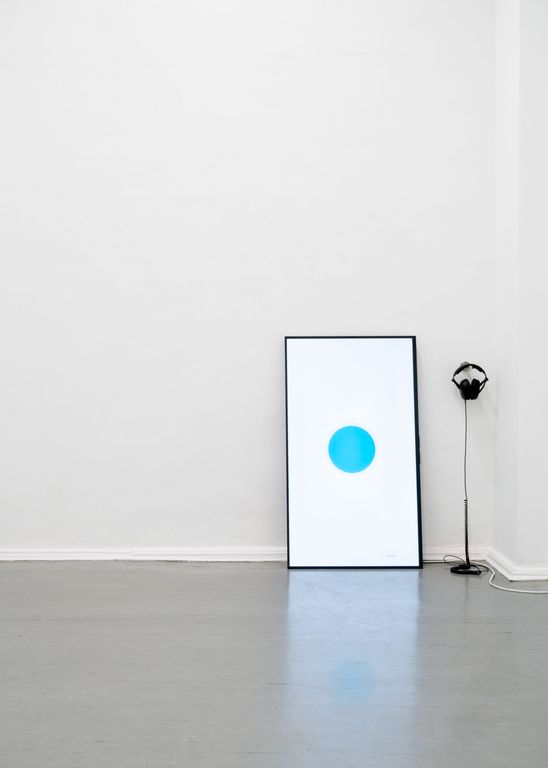
Photo: Henrik Strömberg
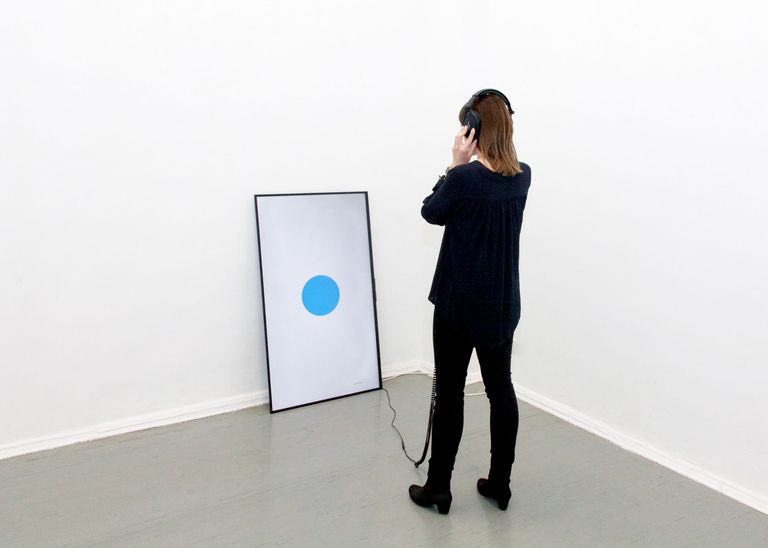
Photo: Sandra Ratkovic
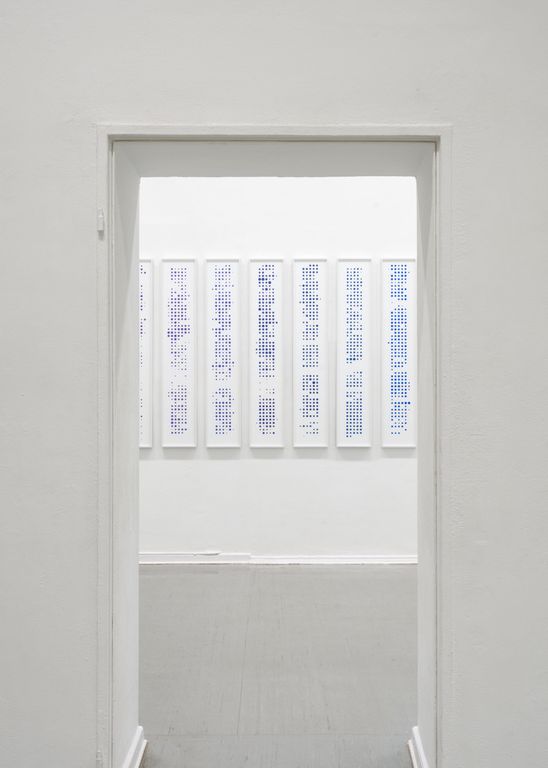
Photo: Henrik Strömberg
Exhibited Works
About the Exhibition
Conceptually, the exhibition deals with the possibilities of perception, drawing on American philosopher Charles Sanders Peirce's categorical division from semiotics. As the founder of semiotics, Peirce's life work was dedicated to systems of signs, developing, among others, the triadically-constructed categories of Firstness, Secondness, and Thirdness. However, far from the classical approach between the designated (signified) and the designator (signifier) as terminologically established by Jacques Lacan or Ferdinand de Saussure, the topic at hand here are paths of transmission which can only be perceived indirectly – something which is hidden behind the fixed categories; an open space bearing an idea, a thought, a condition, a movement, but which demands from the viewer more than the deciphering of a clearly communicated object. Thirdness as the simultaneously determinative, only possible and – critically – open connection constitutes the very lacuna located before and after the words "but" or "and", from which a Before and After are expected. Lacking these meaningful pieces of information, connections emerge out of the individual's sheer imagination, the unlocking of which is to be found in self-reflection (if at all).
As the exhibition's literary and performative piece, an excerpt of Jens Soneryd's new publication The Herbarium, a collection of words and plants, leaves, pressed flowers, moss, and lichens will be presented as a multimedia experience under the title Thirdness is a Pattern, Notes from the Herbarium (2017). In this excerpt from his hybrid Gesamtkunstwerk (total work), Soneryd engages with the dialectic between the spoken and written word. In a reading, he performatively explores the word as event and thus something alive, counterposed to the written word in the form of an object, ergo something preserved. He is mostly concerned with semiotic approaches which investigate our reception theoretically and, more than anything, phenomenologically. Inspired by Peirce's semiotic theory and the often puzzling "third category", Soneryd ultimately conceptualizes in this way the thematic frame of the thirdness exhibition itself.
The works of Johannes Wald, Pedestal for a Muse (2013), left to cool (anger, disgust, fear, joy, sadness and surprise cast in bronze) (2014) and studying the greeks' grace #63 (2012) unite moments and circumstances which are not communicated from the sculptural work in any direct way. Rather, they point to conditions which could yet emerge or already have beforehand. These are by and large existential references which question "Being" in a principled way. When is an object, a thing, a thought existent? Wald seizes upon a condition between the individual stations of emergence which can only be perceived in the actual process of creation, or can ultimately appear only as a freestanding thought. Whether a pedestal for an imaginary figure, six casting channels named after the six basic emotions (following the psychologist Paul Ekman), or a projection of an arrangement of folds on a marble plate – none of these works possess the form of that to which they refer. Sculpture as a craft and medium of art appears in its quality as three-dimensional object. Wald engages with these classical attributes formally and substantially, projecting these categories and codes with a new understanding onto surfaces of a new self-image – his sculptures are not least an attempt to reflect upon his own dichotomous position, caught between that of a sculptor and conceptual artist.
Carsten Becker's historically- and philosophically-guided works investigate established systems and codes, utilizing and deciphering them, before ultimately questioning what is left of them. Becker's multimedia long-term project Activity Tableau (2016) and Past nor Present (2016) deals with the mechanism of complete transparency and its potential for control. The two-part installation consists of several silk screen panels Activity Tableau and a programmed graphic, specifically a website Past nor Present. Since 2000, Carsten Becker has been documenting his daily working hours as a digital data set. Each year's results are transferred into a pattern based on programmed vector graphics, linked to a color assignment following the color spectrum of light, and visualized as silk screen prints. The pattern of Becker's work reveals itself like a fingerprint – yet it is only he who has an emotional connection to this representation of his work ethic. The programmed graphic combines both analogue and binary interpretations of his work. Presented in a hybrid format, the past can be experienced as part of the present. Research on this work led to an intensive engagement with the RAL color system, which is used as a standardized color catalogue in production. The RAL colors were defined by state authorities during the time of the Weimar Republic. In this spirit, Becker's new work Panzergrau, Sandgrau, Dunkelgelb (2017) utilizes the colors black grey (like the paint on German tanks at the beginning of World War II, catalogued as RAL color 7021), sand grey (the color of German camouflage in Africa, removed from the RAL catalogue), and dark yellow (the first color used for German infrared camouflage at the end of the war; no RAL number due to secrecy) in his triptych as part of his historical series on color analysis.
Michaela Zimmer's works 170801, 170802, 170803 (2017) are anchored between performance, painting, and sculpture, and can be, similar to Soneryd's publication, described as a hybrid Gesamtkunstwerk (total work). Zimmer's years-long artistic engagement unites space, body and object through movement. Intuitively and from a highly concentrated physical state, she generates color lines, strokes, and fields whose origins remain imperceptible to the viewer. She uses foil as an additional material, the uses and meanings of which flow in as many directions as her performative painting. Her work is divided into layers, building upon itself like a composition of associative movements. Peirce's categorical theory is implemented most clearly in Zimmer's works. 1. The movement, which forms the pure quality of its origin. The moment of the event is not experienceable. 2. The worked canvas, whose application is visible. Experienceable in the Now. 3. The movement in the canvas. The moment of movement becomes conceivable – and, in this way, indirectly experienceable – through awareness of the formation process. As clear as this breakdown may be, the partially overlapping foil conceals the surface of the canvas, thereby throwing the next veil over possible insights. Here, impressions and associations of the recipients are stimulated. Folds and colors arch through three-dimensional space, initiating a guessing game which soon shifts focus away from the underlying time towards what one views in the present moment.
Henrik Strömberg's Compost project arranges already-existing objects taken from the sociocultural context into a collage, forming a new visual pattern. Using the medium of photography, Strömberg approaches remnants from nature and society and blends them into new "fertile soil". In the installation tell tale (2017) consisting of three wooden display cases, he places a few objects – mostly depictions of coral, plants, ceramics, sculptures, as well as abstract refractions of light and form – into a filigree collection of the human symbolic world with-one-another, recounting a moment created from different, disconnected and above all contradictory events. The selection and positioning of the pictures and objects are the product of a sensitive structure of feelings, whose accentuation serves as a guide. In this way, Strömberg combines photographic likenesses which could not be more contrary in their conditioned perceptions – fuel element spheres from a nuclear reactor, for example, stand in dialogue with an almost full moon shining in the night. The two photographic works by the trail 1 & 2 complement the display case in their substantial and formal difference, reflecting the antithesis of decay and growth through their originally natural and graphically formulated character. Each depicts the vegetative environment of a tropical rainforest, albeit in various stages of being. Here as well, Peirce's triadically structured interpretive processes can be methodically applied.
